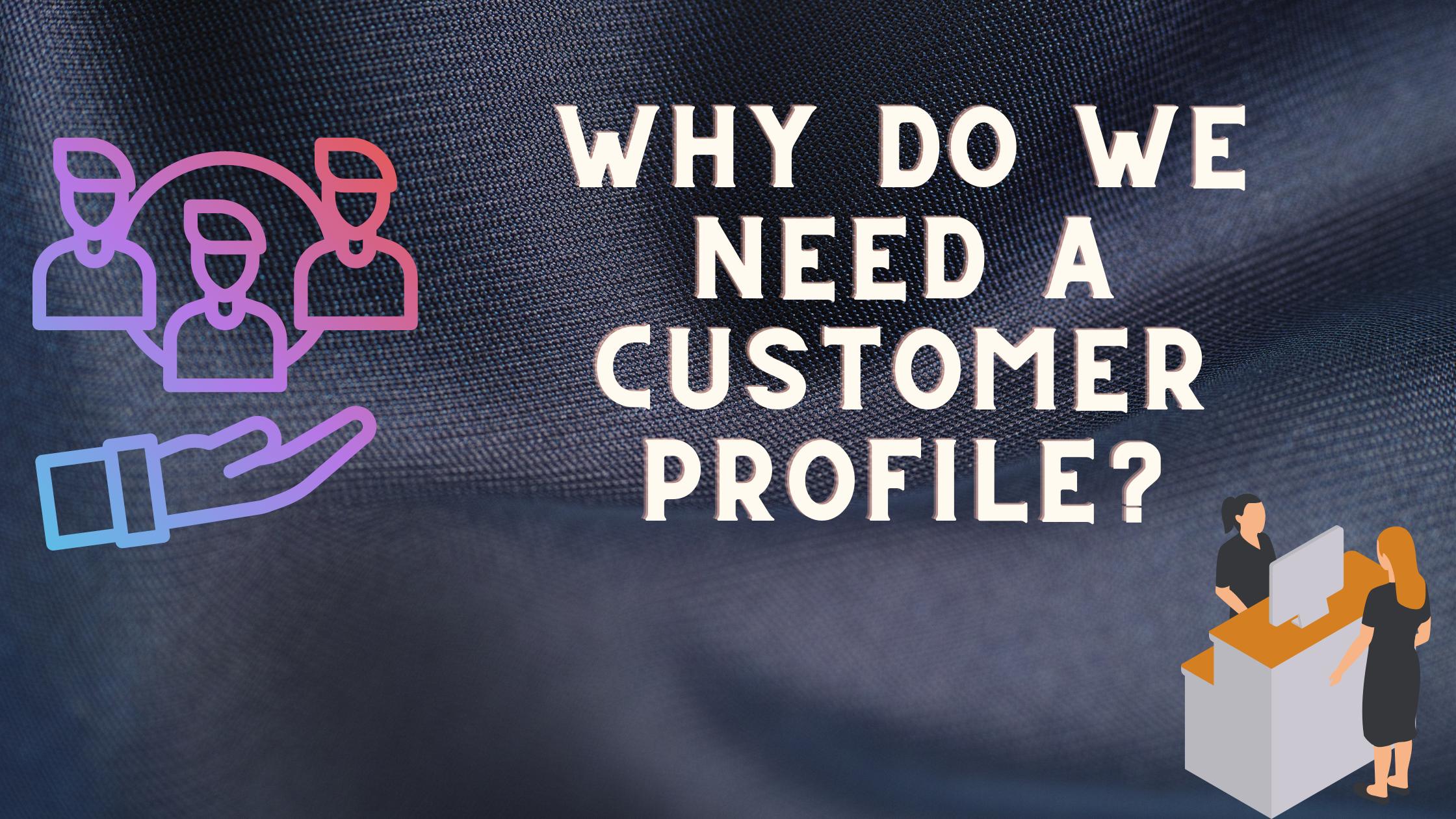
What is a Customer Profile / client profile template
A customer profile is basically a description of a customer group. These rich profiles contain details of key characteristics such as:
- Income
- Location of customer and psychographics
- Company size
- Actionable Shopping preferences
- Interest/ persona
These customer profiles help you create and share clearer images of different types of customers. The main ways these profiles can help your business are:
- Increase marketing results and identifies target audience.
Customer profiles make it easy for your marketing team to find the right prospects. Marketers can use many customer profiles to drive messaging and configure different campaigns.
- Identify valuable customer opportunities and buyer persona
To increase the impact of your sales team, it’s important to take the time to organize new leads and move only the most valuable opportunities to your sales pipeline. Customer profiles can speed up and make this sales process more accurate.
- Meet the needs of potential customers.
The best sales reps can build strong bonds with prospects and understand their problems. A clear understanding of your customer profile can make your sales reps even more effective.
- Harmonize and personalize the customer experience.
It is important that each of your customers has a seamless experience throughout their journey with your company. When all team members are united to understand the customer, it is easier to deliver that experience consistently.
Tips for creating an ideal Customer Profile template
First step: It is important to start the process by carefully examining how (and by whom) the product or service is used. They want to fully understand your product or service and use those insights to gather more practical information. B2b relations can flourish through these steps as well. Customer profile examples are given at the end of this article. Create your own template by looking at it! Let’s look at the sources that can be used for this exam.
- For example, if you are running a SaaS platform, you can learn a lot about your intent and
- You need to dig into your CRM to gather qualitative information and understand who is buying the product and why. You need to understand your ideal buyer.
- You should look at the data to understand who is interested in your product and how you connect with them.
Once you have a set of prerequisites and a solid foundation, you want to engage with your customers and gain direct customer insights.
Connect with your customers’ wishes in the following ways
- Create and submit your survey using a platform like SurveyMonkey. These tools help you collect quantifiable data that can be sorted and used to make data-backed decisions.
- Have 1-1 If you don’t know how your ideal client will perceive your product/service, you can coordinate these sessions to gain a better understanding. Stimulate feedback from it.
- If you wish to collect detailed feedback, you can choose to submit a survey and provide an incentive to complete the survey. This technique helps to collect more detailed feedback. These steps will help you connect with your customers and understand if you are creating an accurate customer profile.
1. Fill out the customer profile
- Once you’ve gathered a lot of information in the last two steps, you can put your insights into action and create a customer profile. To achieve this goal effectively, you need to follow the following steps.
- Gather insights: Collect all the data in one place and sort it. This substep makes it much easier to uncover patterns and important
- Create the first draft. Now that the results are clearer, we need to create a good first draft: We will soon provide some examples and customer profile templates that you can use to get
- Gather feedback from your team: To ensure that your customer profile is accurate and useful, it’s important to share it with other team members and collect their feedback. For example, you need to communicate with sales and marketing to ensure that your customer profile is accurate.
2. Use the customer profile for lead generation
Now that you’ve created a customer profile and shared it with other members of your team, it’s time to start using it. You need to set a trial period for your customer profile to reach this goal.
For example, a team can use a customer profile for a month and regularly check that it’s working. At the end of the trial period of mone-month, you should collect feedback from all major stakeholders.
Next, you need to modify your customer profile in light of this valuable feedback. This process helps refine and refine your customer profile to reflect actual usage. You can create your own customer profile by gathering these details.
3. Maintain your customer
You now have a handy customer profile to guide your sales and marketing efforts. But it’s important to keep track of things and make sure your customer profile reflects reality. Here are some techniques you can use to maintain your customer profile on a regular basis:
- Schedule to modify your customer profile on a regular
- Be sure to incorporate new insights from your sales team.
- Use marketing to monitor changes and development constantly. By using these techniques, you can be confident that you will benefit from useful customer.
This will help you define the type of customer you want.
Tips for creating a customer profile template
The general rule for an ideal customer’s profile is “more information is better”, but you don’t have to create a multi-page document that describes all the habits and characteristics that an ideal customer might show. This customer profile template is a great example of how a simple ICP provides practical insights. Building a customer profile must include the following. As you may have noticed, it contains the most important customer information, including:
- Demographic information of the customer
Demographic data is important to include in your customer profile as it provides insight into typical buying behavior. You can explore market research related to customer demographics to better understand the motivations, issues, and solutions your target customers are looking for.
- Customer’s decision-making process
You must be able to gauge the elements on which they would like to place reliance. Know what would incite them to buy your products and what would put them off.
- Your products that fulfill their needs
In addition to understanding the behavior of your target customers, you need to provide details about the relationship between your target customers and your products or services.
Considerations:
- Objections that your target customers may have about your product or service
- The channel used by the target customer may be exposed to similar products / services
- Product and service aspects that are most likely to drive conversions for your target customers
These insights help inform the typical buyer journey that each target customer goes through, from leads to customers to brand ambassadors.
- Customer’s goals and desires
Your client profile template should contain a typical day in the life of the target client.
You may consider the following questions:
- What do customers do in their free time?
- What shopping habits do customers have?
- How do customers interact with technology regarding the devices they use, the websites they visit, the keyword search terms they use, and the apps they use?
- What interests and hobbies does this customer have? What about your personal relationship? Knowing how your customers spend their time provides an opportunity to position your product or service at those moments.
- Their behaviors and buying tendencies
The best way to fully understand the overall customer experience is to talk to an existing customer over a phone or video call. For that, you can use your email marketing platform to send large numbers of emails to your current customer base, ask if someone can answer a few questions, offer attractive offers, or add perks.
Refer to this link to find a free template here customer profile template!


